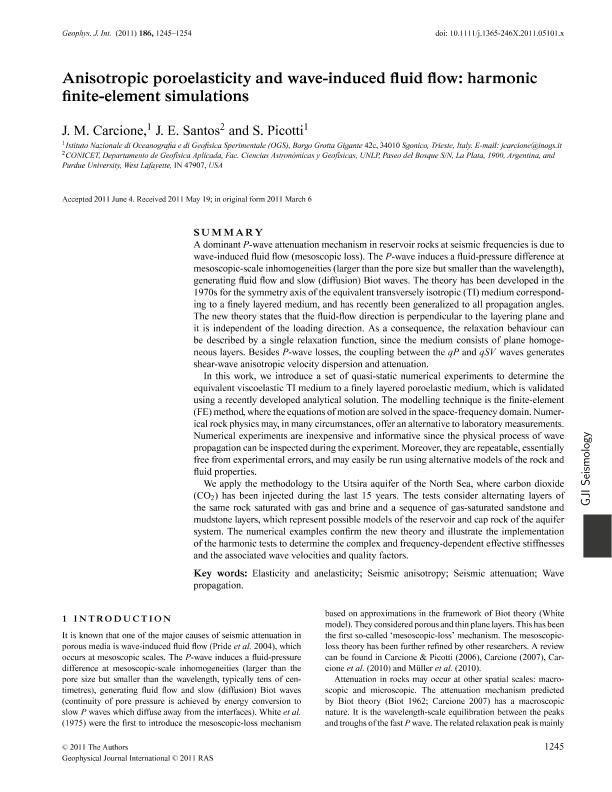Artículo
Anisotropic poroelasticity and wave-induced fluid flow: Harmonic finite-element simulations
Fecha de publicación:
06/2011
Editorial:
Wiley Blackwell Publishing, Inc
Revista:
Geophysical Journal International
ISSN:
0956-540X
Idioma:
Inglés
Tipo de recurso:
Artículo publicado
Clasificación temática:
Resumen
A dominant P-wave attenuation mechanism in reservoir rocks at seismic frequencies is due to wave-induced fluid flow (mesoscopic loss). The P-wave induces a fluid-pressure difference at mesoscopic-scale inhomogeneities (larger than the pore size but smaller than the wavelength), generating fluid flow and slow (diffusion) Biot waves. The theory has been developed in the 1970s for the symmetry axis of the equivalent transversely isotropic (TI) medium corresponding to a finely layered medium, and has recently been generalized to all propagation angles. The new theory states that the fluid-flow direction is perpendicular to the layering plane and it is independent of the loading direction. As a consequence, the relaxation behaviour can be described by a single relaxation function, since the medium consists of plane homogeneous layers. Besides P-wave losses, the coupling between the qP and qSV waves generates shear-wave anisotropic velocity dispersion and attenuation. In this work, we introduce a set of quasi-static numerical experiments to determine the equivalent viscoelastic TI medium to a finely layered poroelastic medium, which is validated using a recently developed analytical solution. The modelling technique is the finite-element (FE) method, where the equations of motion are solved in the space-frequency domain. Numerical rock physics may, in many circumstances, offer an alternative to laboratory measurements. Numerical experiments are inexpensive and informative since the physical process of wave propagation can be inspected during the experiment. Moreover, they are repeatable, essentially free from experimental errors, and may easily be run using alternative models of the rock and fluid properties. We apply the methodology to the Utsira aquifer of the North Sea, where carbon dioxide (CO2) has been injected during the last 15 years. The tests consider alternating layers of the same rock saturated with gas and brine and a sequence of gas-saturated sandstone and mudstone layers, which represent possible models of the reservoir and cap rock of the aquifer system. The numerical examples confirm the new theory and illustrate the implementation of the harmonic tests to determine the complex and frequency-dependent effective stiffnesses and the associated wave velocities and quality factors.
Archivos asociados
Licencia
Identificadores
Colecciones
Articulos(SEDE CENTRAL)
Articulos de SEDE CENTRAL
Articulos de SEDE CENTRAL
Citación
Carcione, J .M.; Santos, Juan Enrique; Picotti, S.; Anisotropic poroelasticity and wave-induced fluid flow: Harmonic finite-element simulations; Wiley Blackwell Publishing, Inc; Geophysical Journal International; 186; 3; 6-2011; 1245-1254
Compartir
Altmétricas




